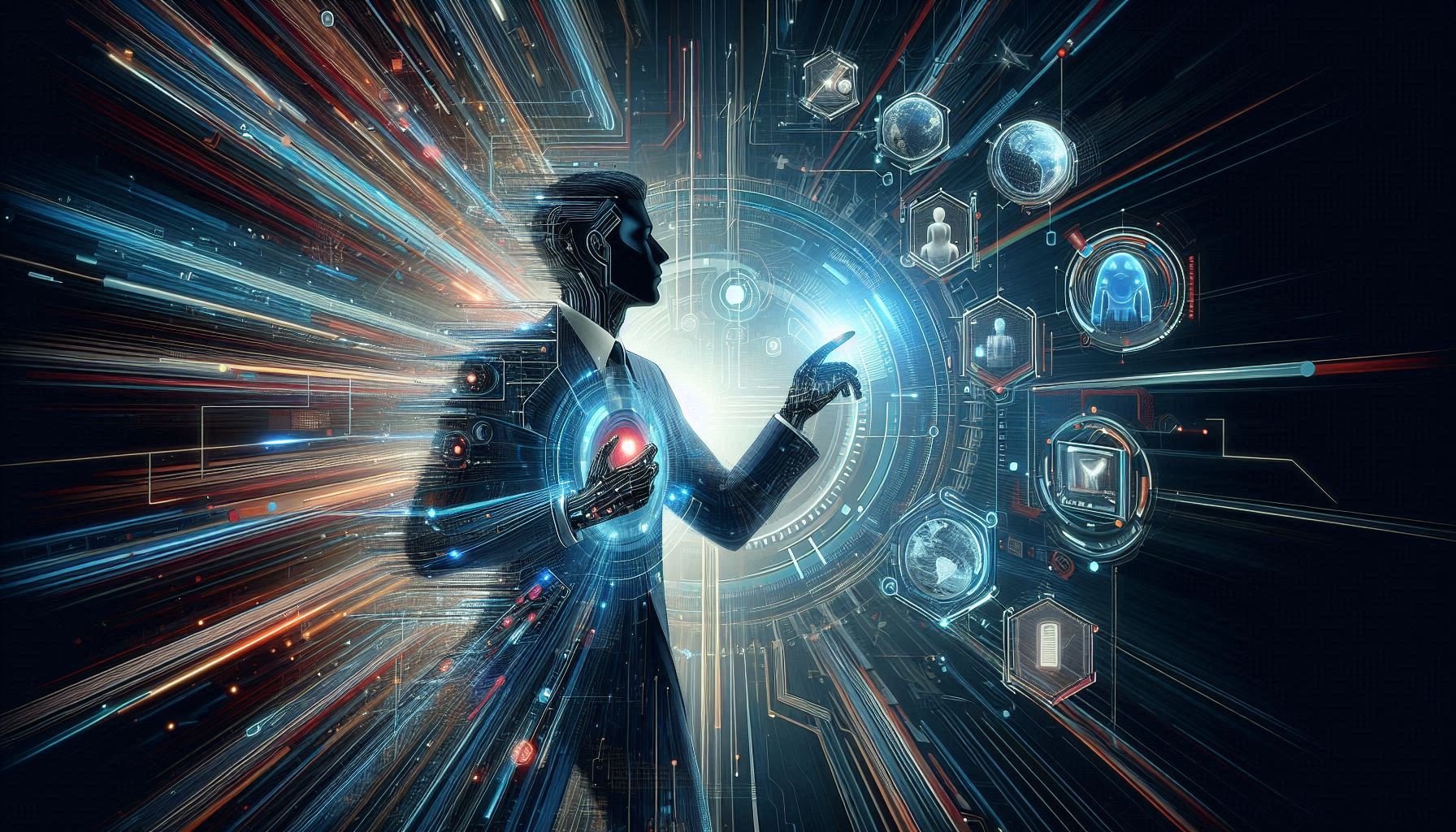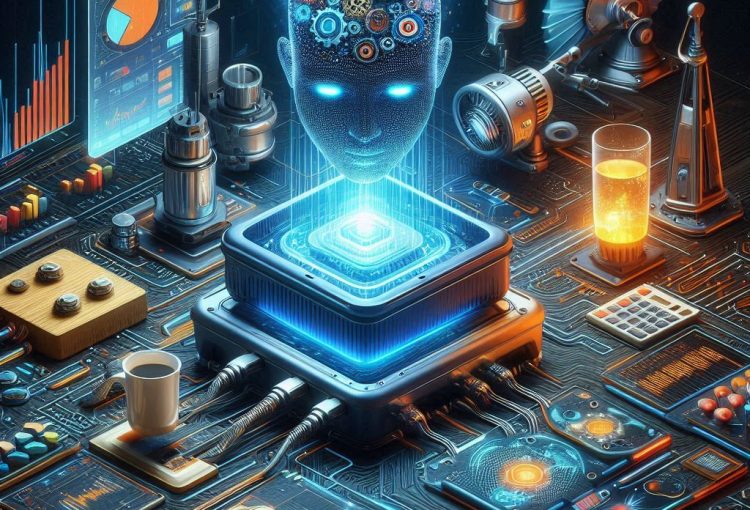
The Future of IT Managed Services: Trends and Innovations in 2024
The very nature of IT managed services in the dynamic digital landscapes of today has undergone a sea change. What was traditionally considered a support function is now seen as an enabler of business strategies in achieving effective and secure operations for the opportunity of growth. Now let’s move to the couple of trends and innovations that will shape the IT managed services space up to 2024. This blog articulates these undercurrents, which can be influential in the kind of opportunities and challenges presented to an industry.
IT Managed Services:
IT managed services are those in which an organization outsources its IT business to a third-party organization, which is known as a Managed Services Provider (MSP). IT managed services encompass functions that stretch from network management to cybersecurity, cloud services, and more. Businesses can focus on their core activities by availing themselves of third-party managed services, thus leveraging the acquired expertise and efficiency of professional IT personnel.
This fact cannot be overstated: IT-managed services are there to give businesses a competitive advantage through the cutting edge of technology, bringing reductions in operational costs and guaranteeing that all kinds of information technology systems are maintained at their best performance levels. In fact, managed services will be highly called for in the future, with the ever-developing digital landscape, and thus, a notice of all changing trends and innovations is very necessary to business.
1) Infusion of Artificial Intelligence and Machine Learning in IT Managed Services:

These will be the powerful additions to change the IT managed services landscape for better. Infusing automation and predictive analytics enhances the decision-making process, bringing IT management closer to the MSPs and permitting the forecasting of issues with the best quality of system performance optimization in 2024.
For instance, AI tools can analyze large pools of data at a single moment to further raise red flags in network traffic, thus giving MSPs the upper hand to avert security threats. Mature AI and ML technologies, as they get integrated into IT managed service systems, are going to increase efficiency, reduce downtimes, and increase proactive management of IT.
2. Cybersecurity Takes Center Stage

Cybersecurity is indeed at the forefront of business minds and MSPs as the threat has picked up in sophistication. In 2024, it will be considered for more focused comprehensive solutions that continue to monitor the threat, detect, and respond to incidents quickly.
MSPs will have to implement state-of-the-art security technologies and practices to stay one step ahead. It means making massive advances in encryption, adopting security solutions based on artificial intelligence, and preparing to comply with the data protection regulations of the future. Businesses that place cybersecurity at the forefront will protect themselves from future threats and retain the trust of customers.
3. The Fog of Cloud and Hybrid Solutions

Cloud computing, therefore, is infused to become the bottom structure on which modern IT infrastructures rest, bestowing flexibility, scalability, and economy. This trend of hybrid cloud solutions by business will increase in 2024.
MSPs implement these complex environments, manage their seamless integration, and provide support further on. The hybrid dimension of cloud solutions enables businesses to optimize their IT infrastructures suited to one’s specific needs balancing out aspects of performance and cost-effectiveness. As businesses become more cloud-driven, MSPs are reshaping business models focused on managed cloud services.
4. Automation and Robotic Process Automation (RPA)

Automation is thereby effectively reshaping the IT industry of managed services—reducing manual intervention, enhancing efficiency, and moderating fatiguing processes. MSPs are especially helped in the automation of repetitive tasks like software updating, data backup, and system monitoring by implementing Robotic Process Automation (RPA).
It raises a level of efficiency that a business may achieve human errors to keep the IT teams focused on strategic assignments. The same shall be the future for automation in the IT managed services industry by 2024, which will be used for the purposes of business excellence automation and optimization in achieving better business outcome.
5. The Implementation of DevOps and Agile methodologies

DevOps and Agile methodologies have become very common in managed service IT, enabling faster deliveries of software and services and fostering a culture of continuous improvement. DevOps emphasizes proper interaction between development and operations teams, leading to more efficient workflow and quicker response periods.
Agile methodologies will also take an incremental development nature, which will make MSPs more responsive to the needs of the customer and deliver higher quality of service. Both these processes will always drive innovation in the IT managed services industry and give a means to allow businesses be abreast of rapid changes.
Innovations Driving the Future of IT Managed Services
1. Predictive Analytics in Proactive IT Management

But then, predictive analytics is one more addition to the many tools in the already huge basket of managed IT services wherein an MSP can ring-fence potential problems even before they happen. Building this upon historical analysis, with patterns revealed, automatically serves in helping the MSP be proactive toward IT management in reducing downtime and minimizing disruption.
In other words, it is possible to apply predictive analytics to the monitoring of IT system health, identifying the earliest signs of damage that may eventually lead to outages. This keeps potential downtime costs under control and ensures that IT infrastructure remains reliable and resilient.
2. The Impact of IoT and Edge Computing

The game is changing with the advent of the Internet of Things (IoT) and edge computing in the world of business, affecting the way business is conducted with regard to IT infrastructure. An enormous amount of data is generated by IoT devices, made possible, in turn, through edge computing, making it attainable by pulling data nearer to the source. This decreases the lag time, allowing a faster time of response and, therefore, is ideal for applications in real-time processing.
MSPs are increasingly providing services to manage IoT and edge computing environments. Their primary goal is to ensure that the organizations are enabled and equipped to leverage the full potential of these technologies. MSPs are going to be the leading, strategic force in converting the new connected world into a managed world.
3. AI-Driven Chatbots to Augment Customer Experience

It is no wonder that AI-driven chatbots are going to be an essential supplement to IT managed services, aiding businesses in a more effective and cost-efficient manner while servicing customer queries and handling support requests. These virtual assistants can handle all of the routine tasks, such as resetting passwords and problems that might arise, so human agents have the potential to invest more in other things that require attention.
MSPs, with the help of AI chatbots, are effectively achieving reduced time in response, support costs, and improved customers personal experience. Would work for now
As AI gets more mature, chatbots will be able to perform activities in a more intelligent way and provide clients with a good level of satisfaction.
4. Managed SOC:

Security Operations Centers (SOCs) are a part of managed IT services that are rapidly becoming an essential armament for organizations and agencies to take advantage of 24/7 monitoring and threat detection with the use of managed SOCs. Managed SOCs provide an end-to-end protection against cyber threats to ensure zero tolerance towards any security breach.
This is because by centralizing security operations, this enabled MSPs to offer an enterprise a more powerful and scalable security solution, to leave their core activities free from this overload, and not to have it burdened by concerns for cyber security risks. With these cyber threats that are surging continuously with changes to keep evolving, this makes managed SOCs more demanding in a cyber threat-torn technological age, constituting a hotspot for MSP growth in today’s landscape.
Challenges Needed to Adapt to New Trends and Innovations

1. Data Privacy and Regulatory Compliance

This is turning out to be an imperative issue with the surging adoption of new technologies in businesses; data privacy and complying with the regulations should be guaranteed at any cost. They are required to maneuver the complex legal landscapes and put in place strong measures of data protection in order to keep the information of their clients safe. The boundary between innovation and compliance needs to be safely guarded and executed by experts.
2. Bridging Skills Gaps in the IT Workforce

Technological changes are growing at a fantastic pace and increasingly causing a skill gap in the IT labor force. MSPs will have to keep training their workforce to manage the new technologies being released and to maintain high service quality. Addressing these skills gaps is likely to be a key element in maintaining competitive advantage amidst change in the IT managed services market.
3. Managing Cost vs. Adopting New Technologies

While new technologies can give huge benefits, they have costs too. MSPs, as well as businesses, do very critical assessments of the new technologies and their services’ return of investment (ROI). Effective strategies for managing costs are important to adopt innovations that are within business goals and budget constraints.
Driving Home Success: Case Studies in IT Managed Services

1. AI-Driven IT Management

A mid-sized company engaged an MSP to integrate AI-fueled solutions into their strategy of IT management. With automated routine tasks and predictive analysis, the enterprise saw a reduction of 30% in system downtime and an increase in operational efficiency by 20%. This is a great example of how AI in IT managed services brings the most clear benefits for the businesses:
An example of how an enterprise, with the support of a managed service provider, it migrated IT infrastructures into the hybrid cloud. The change is primal with the objective of scaling up, cost optimization, and maximizing security over data while doing so. These situations help one place the managed cloud as instrumental in setting the stage for business growth and excelling in operations.
Conclusion

Its bright future will be driven by a lot of trends and innovations that are coming up, many of them expected to set the industry ablaze by 2024 and beyond. Starting with the integration of AI and ML to the rising numbers of managed SOCs, these developments offer businesses a shot at enhancing IT infrastructure, beefing up security, and achieving greater operational efficiencies.
And it is developing in the ever-emerging digital landscape, where business must become aware and act proactively in mending ways that co-opt the trend. This means working with great MSPs who are forward-looking so businesses can assure that their IT systems are resilient, secure, and can sustain long-term growth. It is time to welcome the future of managed services with arms wide open, and the sooner one does so, the better positioned they will be for the future.
